Ministerstvo dopravy pořádalo dne 11. 1. 2023 informačně-průmyslový den k ambiciózním projektům (obecné informace o amb. misích a informace o workshopu s prezentacemi jsou jinde).
Cílem akce bylo:
- představit cíle ambiciózních projektů, časový plán a vizi ministerstva
- představit jednotlivé projekty AMBIC, CZARM, LVICE2, QUVIK, REMEC, SLAVIA, SOVA (řazeno abecedně)
- jasně identifikovat příležitosti pro zapojení se do projektů ve fázích B2/C/D/E
Zúčastnily se zejména firmy, které mají potenciál stát se dodavateli prvokontraktorů případně vstoupit do některého konsorcia ve fázi B2/C/D/E. .
Seznam ambiciózních projektů vybraných pro fázi 0/A/B1 (řazeno abecedně)
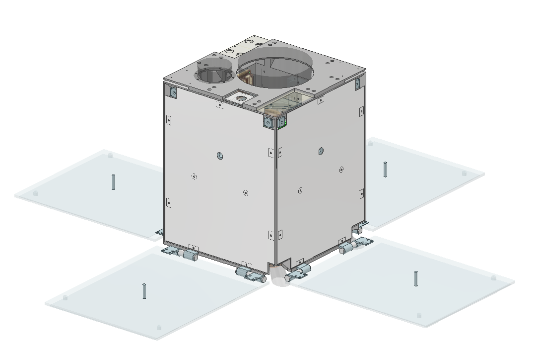
AMBIC (AMBItious Czech satellite)
Consortium: VZLÚ a.s. + S.A.B Aerospace, PEKASAT SE, World from Space
One-liner: Preparatory mission to validate design and manufacturing of EO microsat (100kg class) at LEO for CZ state users
Mission objective: The proposed mission consists of an Earth Observation microsat in LEO (500 km SSO), providing visible and multispectral observations and targeting state users from the Czech Republic. The microsat will be based on a new modular satellite platform developed by VZLU, covering the 30-100 kg range. Current design is 50x50x80 cm for 100 kg spacecraft.
Point of contact: Michal Kubík, kubik@vzlu.cz +420731912882
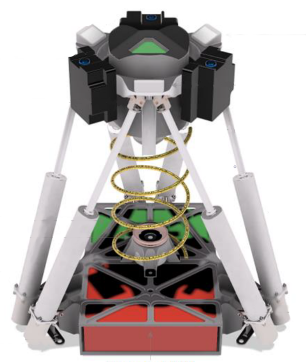
CZARM (CZech Advanced Robotic systeM for servicing, exploration and resources exploitation)
Consortium: L.K. Engineering, s.r.o. + Frentech, 5M, BD Sensors, ČVUT, TAS-F (for 80k€)
One-liner: Complex mechanism; originally planned as robotic arm, but later changed to smart docking adapter for on-orbit servicing as it had better commercial outlook.
Mission objective: The initial objective was to develop and validate on board ISS (Bartolomeo platform) a robotic system. Phase 0 has confirmed that a Smart Robotic Direct Docking Adapter (SRDDA), for In Orbit Servicing missions was the most promising from business and CZ development points of view. Later, mission objectives have been changed. The considered mission is now a hosted payload on EROSS+ (European Robotic Orbital Support Services) mission of the European Union, awarded to TAS-F, in 2026.
Point of contact: Martin Komárek, komarek@lke.cz, +420605282593
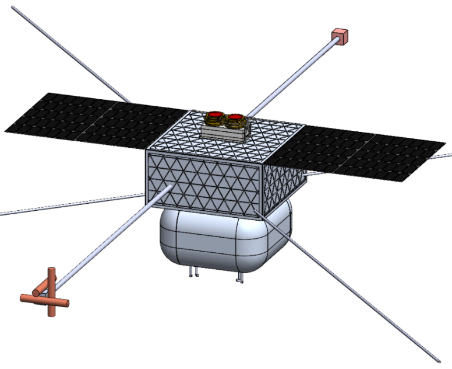
LVICE2 (Lunar VIcinity Complex Environmental Explorer)
Consortium: esc Aerospace s.r.o. + ČVUT (FJFI, FEL, FS), MFF UK, Ústav fyziky atmosféry a Ústav jaderné fyziky AV ČR, Stellar Exploration EU (+ support from LKE, SpaceManic, 5M and OHB Czechspace)
One-liner: microsat for Earth magnetospheric tail and Solar Particle analysis at lunar orbit and at L4-L5
Mission objective: The project intends to study the development of a dedicated microsatellite for a 4-5 year mission implemented into two phases. The first one in a lunar orbit mission will study Earth magnetospheric tail and SPE. The second one, at L4-L5 Lagrange points of the Earth-Moon system, will investigate the presence of micrometeorites and dust in the Kordylewski clouds. The payload consists of the following instruments: Faraday cups, magnetometer, radio wave antenna, proton/electron monitor, gamma/neutron spectrometer, LET spectrometer, dust impact sensor, VIS/SWIR cameras.
Point of contact: Petr Suchánek, petr.suchanek@esc-aerospace.com, +420605418130
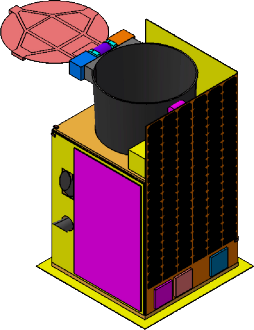
QUVIK (Quick Ultra-Violet Kilonova surveyor)
Consortium: VZLÚ a.s. + Masarykova Univerzita, TOPTEC, PEKASAT
One-liner: Microsat (~100 kg) for UV photometry of kilonovae, resulting from neutron stars mergers
Mission objective: QUVIK is a UV space telescope on a ∼100kg micro-satellite operating on LEO, with a moderately fast repointing capability and a near real-time alert communication system. The mission shall measure the brightness evolution of kilonovae, in the UV band and thus it shall distinguish between different explosion scenarios. Between observations of transient phenomena, it will perform other observations of interest to the scientific community, partly selected in an open competition.
Point of contact: Róbert Šošovička, sosovicka@vzlu.cz, +420739055465
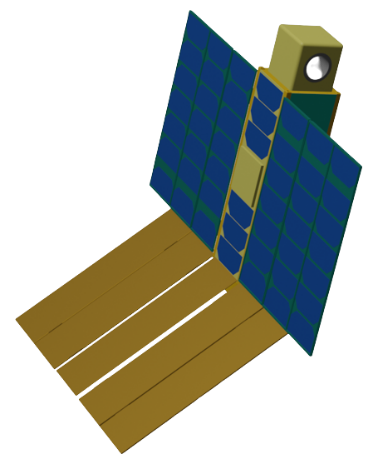
REMEC (Radiation Environment Monitor for Energetic Cosmic rays)
Consortium: ÚTEF ČVUT + BD Sensors, Huld, University of Geneva (66k€), Politecnico di Milano (52k€)
One-liner: 27U microsat for Galactic Cosmic Rays and Solar Particle analysis at L2 or lunar orbit
Mission objective: The project intends to study the development of a dedicated microsatellite, around the size of a 27U cubesat (50kg), for analysing Galactic Cosmic Rays (GCR) and Solar Energy Particles (SEP) in a deep space orbit outside the Earth’s magnetosphere (L2 or lunar orbit). These measurements will fill in observational gaps that exist today in a wide 10MeV/n-20GeV/n energy range. They will allow developing science regarding GCR origins, SEP and space weather models. In particular such measurements, above 50MeV/v, are important to be made as particles at these energy levels can penetrate spacecraft and spacesuits, presenting hazard for space exploration. The payload consists of 3 instruments: a novel miniaturized magnetic spectrometer and two radiation monitors.
Point of contact: Robert Filgas, robert.filgas@utef.cvut.cz, +420775868789
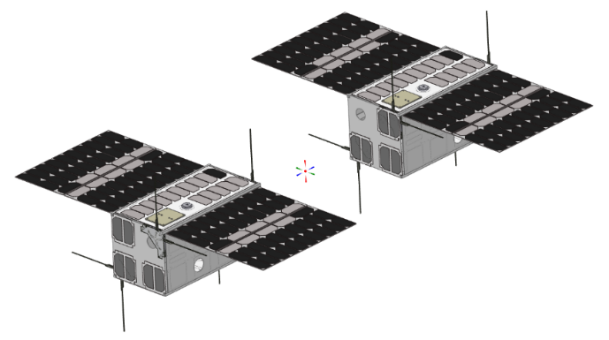
SLAVIA (Space Laboratory for Advanced Variable Instruments and Applications)
Consortium: S.A.B Aerospace s.r.o. + VZLÚ, Huld, J.Heyrovský Institute of Physical Chemistry, Zaitra, VUT, Lightigo
One-liner: Tandem of two 16U microsats (<30kg) for meteoroids spectral analysis at LEO
Mission objective: To plan, design and validate the concept of a tandem spacecraft cubesat mission with scientific instruments examining meteors in upper atmosphere layers, the plasma created along their path during an atmospheric entry and composition of dust on Earth´s orbit. SLAVIA will be equipped with a hyperspectral camera for analysis of meteor ablation plasma (VESNA), a mass spectrometer exploring the dust composition on orbit (HANKA) and radio antenna supporting plasma spectral analysis (RIP2). SLAVIA would be a first step in demonstrating, in Earth orbit, the required capability for asteroid space resources exploration.
Point of contact: Inna Uwarova, iuwarowa@sabaerospace.cz, +420734257296

SOVA (Satellite Observation of waVes in the Atmosphere)
Consortium: OHB Czechspace s.r.o. + IAP CAS, Meopta, DLR (10 k€), Forschungszentrum Jülich (16 k€), OHB System (50 k€), UJF CAS
One-liner: Microsat (<100kg) for gravity waves investigation within mesosphere and lower thermosphere (60-300km)
Mission objective: The project intends to study the development of a smallsat, with an optical payload, aiming at investigating gravity waves and long period infra sound within the mesosphere and thermosphere (60 to 300 km). The observation of temperature and wind speed in this altitude range would improve the understanding of these phenomenon and help improve climate models. The payload to be carried is optical instrumentation developed by Meopta collecting airglow data in multiple bandwidths.
Point of contact: Jakub Ševeček, jakub.sevecek@ohb-czech.cz, +420777799866